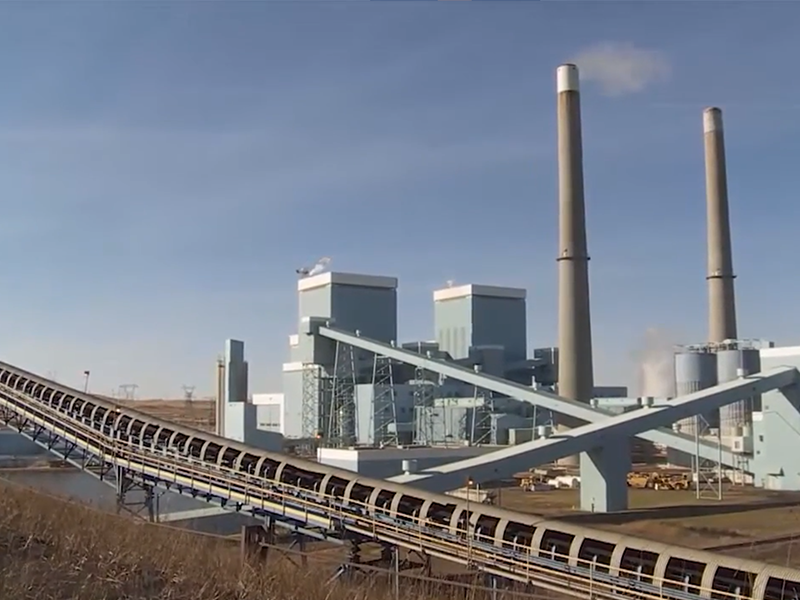The PCOR Partnership and Prairie Public Broadcasting have developed a series of videos to help all audiences think critically about carbon management and meet the challenge it presents.
Carbon sequestration, the capture and long-term storage of CO2 from the atmosphere or from large CO2 sources like power plants, is emerging as a major strategy for addressing climate change concerns. This 30-minute feature is full of information on anthropogenic CO2 and takes the viewer from the basic information on CO2, to how CO2 is related to energy use, and how CO2 sequestration fits into the mix of CO2 management strategies.
Carbon dioxide (CO2) is a greenhouse gas and the major component of our carbon footprint. Terrestrial CO2 sequestration is a way of reducing our carbon footprint using the natural ability of plants to absorb CO2 from the atmosphere and store the carbon in roots, stems/trunks, leaves, and soils. This 30-minute documentary shows examples from North and South America where effective landscape management is helping plants to absorb carbon as a first step toward reducing our carbon footprint.
What began as a search for oil became the story of geologic carbon dioxide (CO2), enhanced oil recovery, and geologic CO2 sequestration—a 100-year journey from a drill hole venting CO2 in the desert of northern New Mexico to a technology for managing CO2 emissions from large industrial sources like power plants.
In the modern world, energy use and carbon footprint go hand in hand with quality of life. How can we maintain our quality of life, help other countries improve theirs, and keep carbon emissions under control?
Boom and bust: it’s the story of the frontier. For southeastern Montana, boom times came with cattle in the 1880s and with oil in the 1960s. Now, carbon dioxide from human activities is bringing the Bell Creek oil field back to life.

Carbon dioxide from human activities is bringing the Bell Creek oil field back to life
WATCH NOW
The three stages of oil production historically and in relation to the Bell Creek oil field
WATCH NOW
Scientists and engineers are using the Bell Creek enhanced oil recovery operation to learn about the behavior of injected CO2 and to develop MVA techniques
WATCH NOWCoal has changed lives tremendously over the past 300 years. From better iron to locomotion to electricity, coal has improved the quality of everyday life in postindustrial economies. Technological innovations have made using coal cleaner and safer. Even with oil, natural gas, nuclear, and renewables sharing the energy load, today's use of coal is unprecedented—meeting postindustrial energy demands and fueling the development of India and China. But releasing the energy of coal also releases carbon dioxide. What will happen in the twenty-first century as we address concerns about climate change and the ever-increasing demand for energy and all that it provides?

Coal faces a new environmental challenge as concerns about climate change heat up and energy demands increase globally
WATCH NOWThis 30-minute feature is full of information on anthropogenic (human) CO2 emissions, including where they come from and how markets are playing a role in reducing emissions. This documentary also provides information on the U.S. Department of Energy National Energy Technology Laboratory's seven Regional Carbon Sequestration Partnerships and their role in assessing opportunities for carbon sequestration across North America.
Permanent downhole monitoring (PDM) uses casing-conveyed temperature and pressure acquisition systems to provide continuous real-time information to support decision making and reservoir performance evaluations. This 20-minute video is intended to acquaint a technical audience with the basics of casing-conveyed PDM systems as well as the unique field installation practices that these systems require using an example from a CO2 EOR project in the Denbury Resources-operated Bell Creek oil field in southeastern Montana.

An example from a CO2 EOR project in the Denbury Resources-operated Bell Creek oil field in southeastern Montana
WATCH NOW
Additional Content: Enhanced oil recovery (EOR), also known as CO2 flooding, and its relationship to geologic sequestration
WATCH NOW
Additional Content: The three stages of oil production historically and in relation to the Bell Creek oil field
WATCH NOW